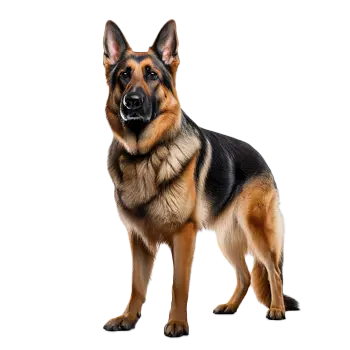The German Shepherd Dog carries one of the most recognizable names in the canine world, though this magnificent breed has been known by several designations throughout its history. The official registered name, German Shepherd Dog, directly translates the original German designation Deutscher Schäferhund, emphasizing both the breed's national origin and its foundational purpose as a herding dog. This name has remained consistent across most kennel club registrations, maintaining the connection to the breed's German heritage and working function.
The shortened form Shepherd or Shepherds Dog sees common informal use among owners and enthusiasts, providing a convenient abbreviation of the longer official name. This colloquial term captures the essence of the breed's original purpose while being easier to use in everyday conversation. Many families simply refer to their dogs as Shepherds, a term immediately understood by dog lovers everywhere.
In the United States and other English-speaking countries, the abbreviation GSD has gained widespread use, particularly in written communications and among breed enthusiasts. This acronym provides efficient shorthand in online discussions, breed clubs, and veterinary records. Similarly, the German abbreviation DSH appears in European contexts where German terminology is preferred.
Historical naming conventions underwent significant changes during the World Wars, when anti-German sentiment led some countries to rename the breed. In the United Kingdom, the breed was temporarily registered as the Alsatian Wolf Dog and later simply Alsatian, a reference to the Alsace-Lorraine border region between France and Germany. This alternative name persisted in Britain for decades, with The Kennel Club not reverting to German Shepherd Dog until 1977. Some older British owners still use Alsatian, though the term has largely faded from common use.
The breed's recognition spans virtually every major kennel club organization worldwide, reflecting its status as one of the most popular and recognizable breeds globally. The American Kennel Club, United Kennel Club, Canadian Kennel Club, The Kennel Club of the United Kingdom, and the Fédération Cynologique Internationale all recognize the German Shepherd Dog, maintaining breed standards that share core elements while differing in specific details. The World Union of German Shepherd Dog Clubs works alongside the original German club, the Verein für Deutsche Schäferhunde, to maintain international breed standards and promote consistent quality worldwide.
Recognition of the breed came relatively quickly following its formal establishment. The Verein für Deutsche Schäferhunde was founded in 1899, immediately establishing breed standards and registration practices. International recognition followed within the early twentieth century, with the breed gaining acceptance across Europe and North America. Today, the German Shepherd Dog consistently ranks among the most registered breeds in virtually every country where statistics are maintained, testament to the breed's enduring appeal and exceptional qualities.

